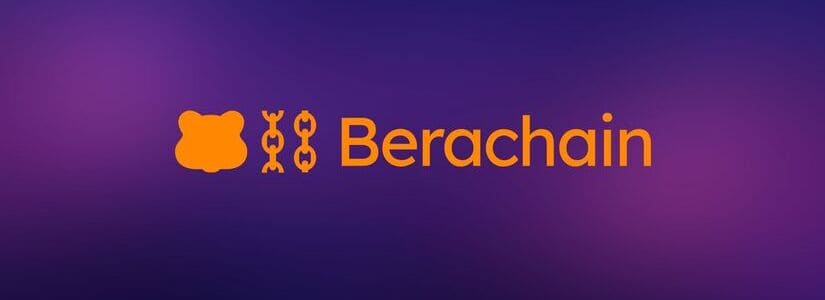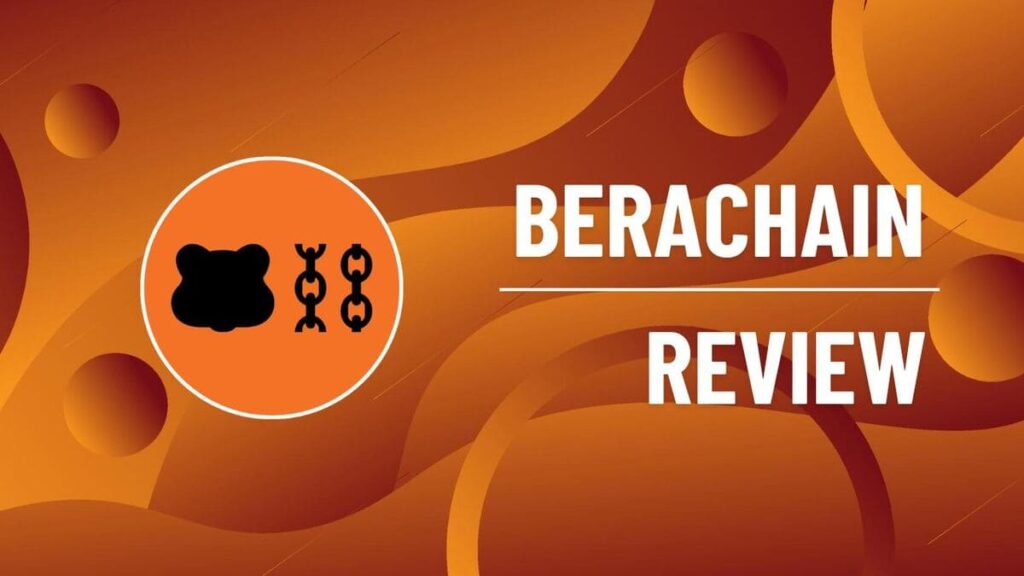Liquidity fragmentation in the DeFi sector and the lack of clear incentives for developers remain structural challenges for the cryptocurrency industry. Berachain is a Layer 1 (L1) blockchain that introduces the Proof-of-Liquidity (PoL) consensus and a modular architecture designed to redefine liquidity management and security in the DeFi industry.
Through a design that combines full compatibility with the Ethereum Virtual Machine (EVM), incentives for decentralized applications, and an interconnected token system, Berachain proposes an ecosystem that aims to resolve the main limitations of current blockchains without compromising decentralization.

What is Berachain?
Berachain is a high-performance blockchain that combines native Ethereum compatibility, an innovative liquidity-based consensus model, and a modular framework for consensus clients. Its primary goal is to optimize the development of DeFi applications and enhance the security and stability of the decentralized financial ecosystem.
Unlike other projects that merely replicate Ethereum’s infrastructure, Berachain introduces an economic model based on the efficient allocation of rewards for users, developers, and validators. Its Proof-of-Liquidity (PoL) protocol ensures that network security and liquidity are not separate entities but rather reinforce each other.
The Berachain ecosystem is built on three fundamental principles:
- Liquidity Defragmentation: Integration of DeFi services at the blockchain level to prevent capital dispersion across protocols.
- Developer Incentives: A model that directly rewards applications rather than just validators.
- High Accessibility: Infrastructure identical to Ethereum that reduces friction in smart contract migration and user adoption.
How Does Berachain Work?
Berachain is a Layer 1 blockchain designed to maximize flexibility, scalability, and security through a modular system. Its architecture is based on the BeaconKit Framework, a tool developed with the Cosmos SDK that enables the creation of consensus clients compatible with the Ethereum Virtual Machine (EVM).
The implementation of BeaconKit grants Berachain several structural advantages:
- Modularity in execution and security: By decoupling network components such as consensus, transaction execution, and liquidity management, Berachain allows each of these modules to evolve independently. This means the blockchain can adopt new optimizations without altering its core operation.
- Uncompromised Ethereum compatibility: Thanks to EVM integration, developers can deploy smart contracts and decentralized applications (dApps) without rewriting code or adapting their infrastructure. This significantly reduces development costs and encourages the migration of existing Ethereum projects.
- Ease of integrating scalability solutions: Berachain’s architecture enables the seamless implementation of optimistic rollups and zk-rollups, as well as connectivity with other execution layers. This allows the network to increase its performance without sacrificing decentralization or security.
- Interoperability with the Cosmos ecosystem: Being based on the Cosmos SDK, Berachain has native access to the Inter-Blockchain Communication (IBC) protocol, facilitating asset and data transfers between different chains within the Cosmos ecosystem.
This modular design maximizes Berachain’s efficiency and flexibility, allowing developers to maintain a high degree of control over their application implementations without depending on modifications to the underlying infrastructure. Simultaneously, the blockchain can evolve over time through updates and improvements to its individual components without affecting the overall network’s operability.

Proof-of-Liquidity: A Liquidity-Based Consensus Model
Berachain introduces Proof-of-Liquidity (PoL), an innovative consensus mechanism that combines the principles of Proof-of-Stake (PoS) with a liquidity-based incentive system.
While PoS validators lock tokens in the network without significant economic utility, in PoL, users receive a soulbound governance token (BGT) in exchange for providing liquidity to Berachain’s markets. This model allows blockchain security and economic activity to mutually reinforce each other:
- Users can stake liquidity instead of merely locking tokens in the consensus layer.
- The protocol rewards participants with BGT, granting them influence over network governance.
- Incentives are aligned for developers and validators, ensuring a more stable and efficient ecosystem.
This approach also reduces reward system volatility, as it does not rely solely on traditional staking but rather on an economic cycle where available liquidity remains in motion within the ecosystem.

Token System: BERA, BGT, and HONEY
Berachain operates with an economic model based on three interconnected tokens designed to ensure balance between security, governance, and utility within the network. This structure avoids traditional blockchain incentive system issues, such as validator power concentration or uncontrolled governance token speculation.
What is the BERA Token and How Does It Work?
It is the network’s native token and plays a central role in Berachain’s economy. It is used to pay transaction fees, execute smart contracts, and provide incentives to validators within the Proof-of-Liquidity (PoL) consensus mechanism. Unlike other utility tokens, BERA is not used for network governance, preventing large token holders from directly influencing decision-making.
What is BGT (Berachain Governance Token) Used For?
This soulbound token can only be obtained by providing liquidity to Berachain’s markets. As it is non-transferable and non-tradeable, BGT functions exclusively as a governance mechanism, allowing the most active users within the ecosystem to participate in key decisions regarding network parameters, reward issuance, and incentive distribution. This design aims to prevent power concentration among external investors or speculators and foster governance aligned with community interests.
What is the Stablecoin HONEY?
HONEY is Berachain’s native stablecoin, used as a unit of account and medium of exchange within the ecosystem. It is backed by digital assets such as USDC and PYUSD, providing stability and reliability in its value. HONEY facilitates transactions between DeFi protocols, service payments within the ecosystem, and liquidity provision on various platforms without direct exposure to BERA’s volatility.
Berachain’s design prevents the direct conversion of BERA to BGT, meaning the only way to gain governance power is through active network participation via liquidity provision. This prevents BERA whales from acquiring governance control without contributing to ecosystem stability.

Is BERA a Good Investment?
The BERA token, as Berachain’s native asset, plays a crucial role in paying transaction fees, executing smart contracts, and incentivizing validators.
However, its investment value depends on several factors. Firstly, BERA’s utility within the ecosystem is well-defined, but it does not have a direct governance role, limiting its influence over key blockchain decisions. This could stabilize its value but might also restrict its market appreciation, as it is not subject to speculative governance-driven demand.
Secondly, BERA’s economic model means its value will be directly linked to activity within the Berachain ecosystem, which depends on network adoption and growth.
In conclusion, BERA could be a relatively stable investment within its ecosystem, but its growth potential primarily depends on Berachain’s adoption and the economic activity generated within the network rather than speculative or governance demand. As with any cryptocurrency, investors must consider the inherent risks of volatility and platform security from the outset.

Incentives for Developers and DeFi Projects
One of the key factors for blockchain growth is its ability to attract and retain developers. In the Berachain ecosystem, adoption by DeFi projects and decentralized applications (dApps) is not only a priority but is also supported by an incentive system specifically designed to foster innovation and activity within the network.
Unlike other blockchains where validators receive most rewards, Berachain introduces a model in which part of the blockchain’s emissions are directly distributed among developers and protocols contributing liquidity and transaction volume. This strategy aligns economic incentives with ecosystem growth, ensuring that projects enhancing network activity and stability are rewarded.
The “reward vaults” system is a crucial component of this incentive structure. Each protocol operating on Berachain can establish its own reward vault, enabling them to distribute customized incentives to users interacting with their applications. This generates a positive feedback loop, as users have an economic incentive to use dApps.
Additionally, the network encourages new solutions by allowing specific incentives for different ecosystem sectors, such as decentralized exchanges (DEXs), lending protocols, NFT platforms, or payment-focused applications.

Conclusion
Berachain presents an innovative solution to structural DeFi ecosystem challenges, such as liquidity fragmentation and misaligned developer incentives. Its Proof-of-Liquidity (PoL) model introduces new perspectives on the advantages of staking by directly linking it to network liquidity, theoretically improving both system stability and governance participation.
In general, Berachain represents an interesting proposal for the blockchain industry, with an innovative approach to liquidity management and incentive decentralization. However, as with any new infrastructure, its success will depend on its actual implementation, market response, and ability to sustain a viable economic ecosystem










